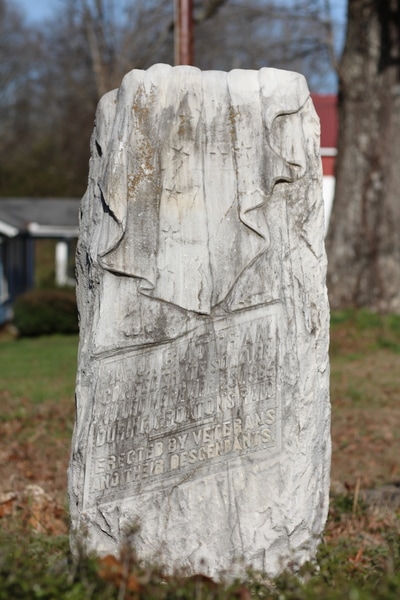5fish
Well-Known Member
- Joined
- Jul 28, 2019
- Messages
- 10,687
- Reaction score
- 4,551
The Battle of Munford took place in Munford, Alabama, on Sunday, April 23, 1865, during the raid through the state by 1,500 Union Army cavalrymen under General John T. Croxton, part of the force participating in Wilson's Raid. The Battle of Munford and a minor action at Hendersonville, North Carolina on the same day were the last battles of the American Civil War east of the Mississippi River.

 en.wikipedia.org
en.wikipedia.org
Snip... another saber charge?
The Confederate soldiers in the battle were described as convalescents, home guards, and pardoned deserters, while the Union cavalry was a veteran force armed with 7-shot Spencer repeating carbines. The Confederates were commanded by General Benjamin Jefferson Hill. Lieutenant Lewis E. Parsons had two cannons which fired several rounds before they were overrun. The Union troops won the brief battle. Parsons was appointed provisional governor of Alabama in June after the war's end.
The Union and Confederate soldiers killed that day are described by author Rex Miller as the last to die in open combat by contending military forces.[14]
A minor battle between the Veteran Union Forces and a group of Confederate soldiers that was ended quickly with the victory of the Union.
Estimated Casualties: 2 (Union 1, Confederacy 1)
Snip... Last man to die... the link has photos of the memorials..

On November 4, 1914, the John Tyler Morgan Chapter of the United Daughters of the Confederacy (UDC) placed a memorial for Buttram in the spot where he fell and was buried. The monument reads, “A.J. BUTTRAM, CONFEDERATE SOLDIER, KILLED HERE APR. 23, 1865, DURING CROXTON’S RAID—ERECTED BY VETERANS AND THEIR DESCENDANTS.” Behind it, an American flag stands tall. In 2015, the Major General Patrick R. Cleburne Chapter of UDC erected a new marker in front of the fading original monument at a re-dedication ceremony

Battle of Munford - Wikipedia
 en.wikipedia.org
en.wikipedia.org
Snip... another saber charge?
The Confederate soldiers in the battle were described as convalescents, home guards, and pardoned deserters, while the Union cavalry was a veteran force armed with 7-shot Spencer repeating carbines. The Confederates were commanded by General Benjamin Jefferson Hill. Lieutenant Lewis E. Parsons had two cannons which fired several rounds before they were overrun. The Union troops won the brief battle. Parsons was appointed provisional governor of Alabama in June after the war's end.
The Union and Confederate soldiers killed that day are described by author Rex Miller as the last to die in open combat by contending military forces.[14]
Snip...THE LAST BATTLE.
Numerous battles have been written up as "the last fight of the rebellion." Without disputing in regard to the matter it is a fact, not generally known, that a battalion (the saber battalion) of the Second Michigan cavalry, under brevet Major Whittemore, charged the force under General Hill, near Talladega, Alabama, on the 23d of April, 1865, and was supported by the regiment and brigade, scattering the entire Confederate force and capturing the artillery, and many prisoners. This was fourteen days after the surrender at Appomattox, and therefore quite late enough after a cessation of hostilities. The next day the country was filled with small parties returning home—a sadly broken down people.
-Captain Marshall P. Thatcher, Second Michigan Cavalry [
A minor battle between the Veteran Union Forces and a group of Confederate soldiers that was ended quickly with the victory of the Union.
Estimated Casualties: 2 (Union 1, Confederacy 1)
Snip... Last man to die... the link has photos of the memorials..

The Last Battle
I come from a small town in Alabama with a population of less than two thousand. Most people don’t have any idea where Munford is (right between Talladega and Oxford) and probably haven’t even...
www.alabamaheritage.com
On November 4, 1914, the John Tyler Morgan Chapter of the United Daughters of the Confederacy (UDC) placed a memorial for Buttram in the spot where he fell and was buried. The monument reads, “A.J. BUTTRAM, CONFEDERATE SOLDIER, KILLED HERE APR. 23, 1865, DURING CROXTON’S RAID—ERECTED BY VETERANS AND THEIR DESCENDANTS.” Behind it, an American flag stands tall. In 2015, the Major General Patrick R. Cleburne Chapter of UDC erected a new marker in front of the fading original monument at a re-dedication ceremony
